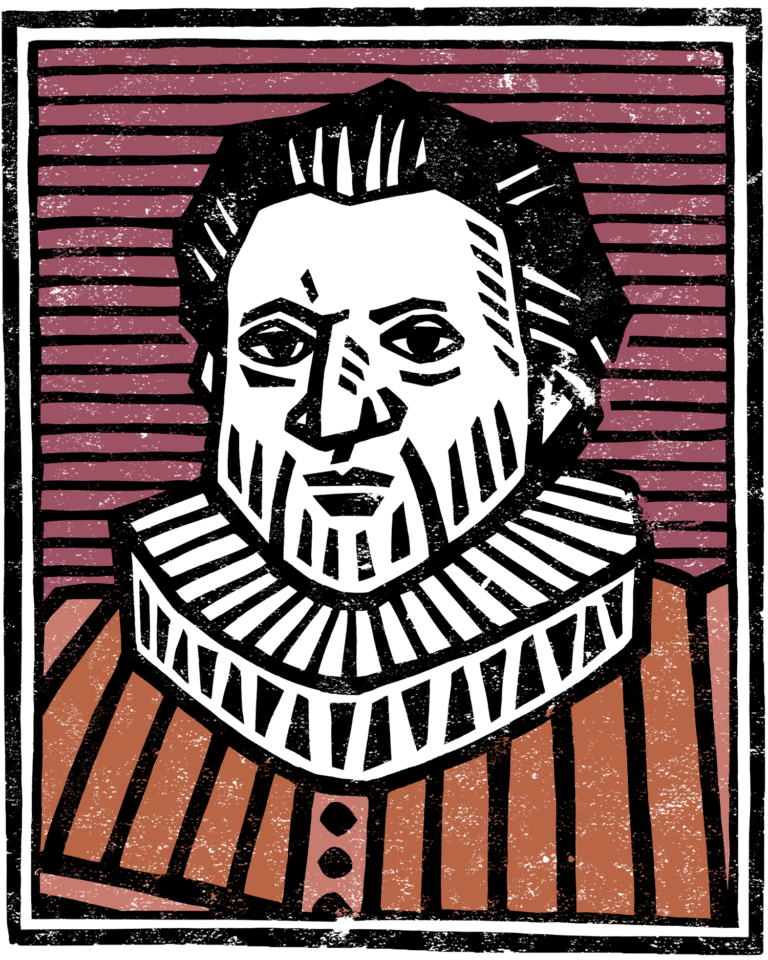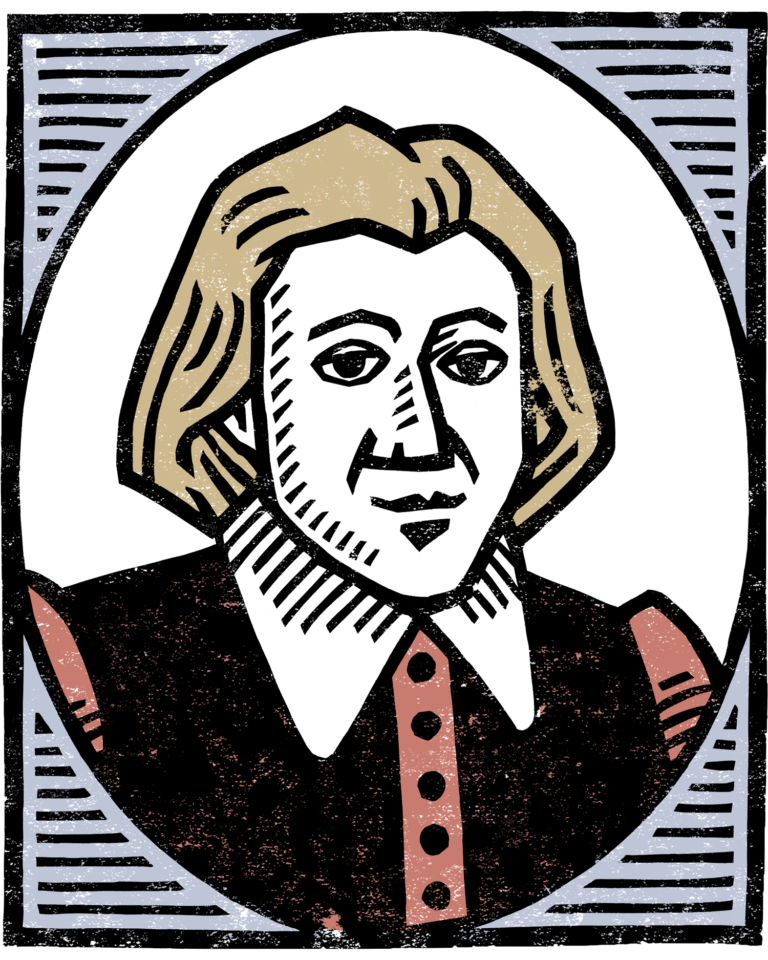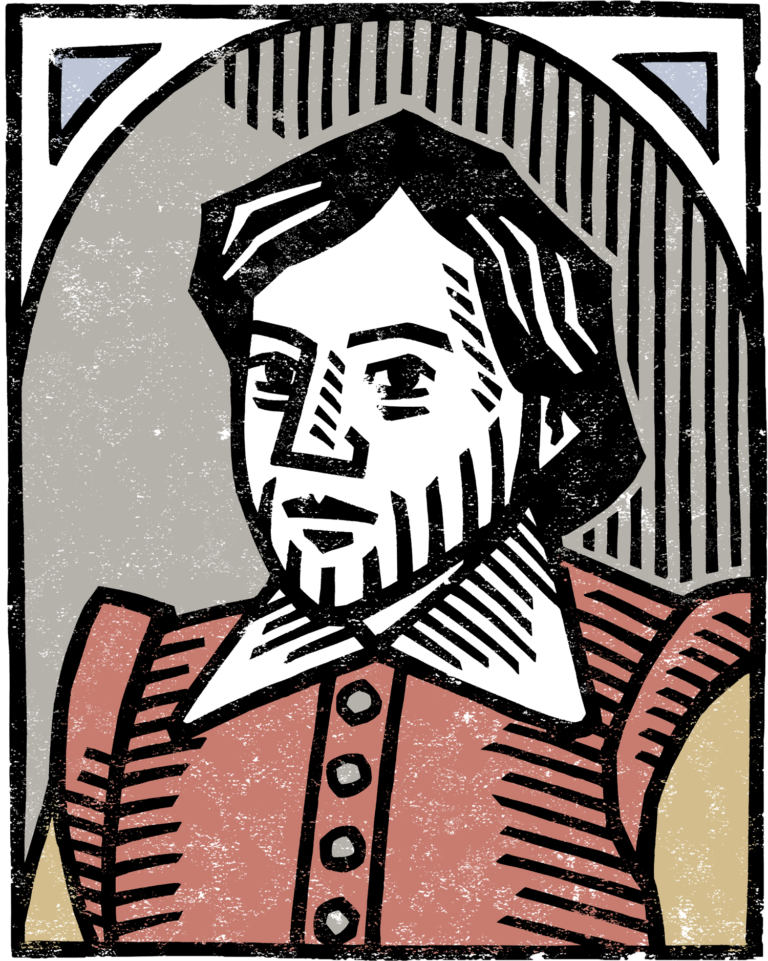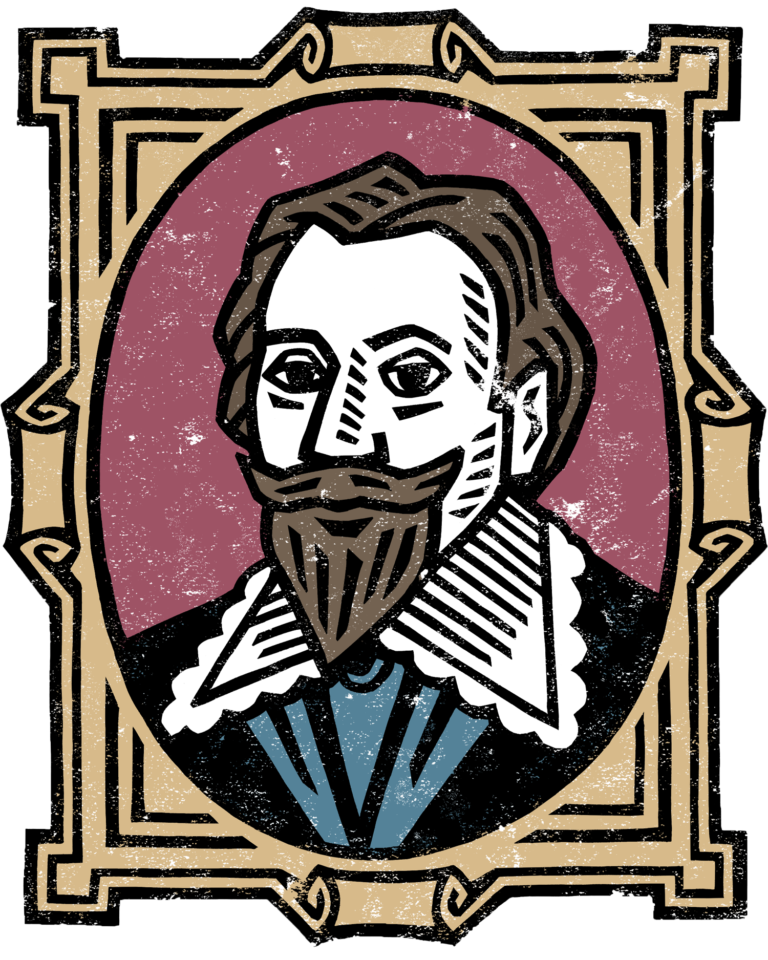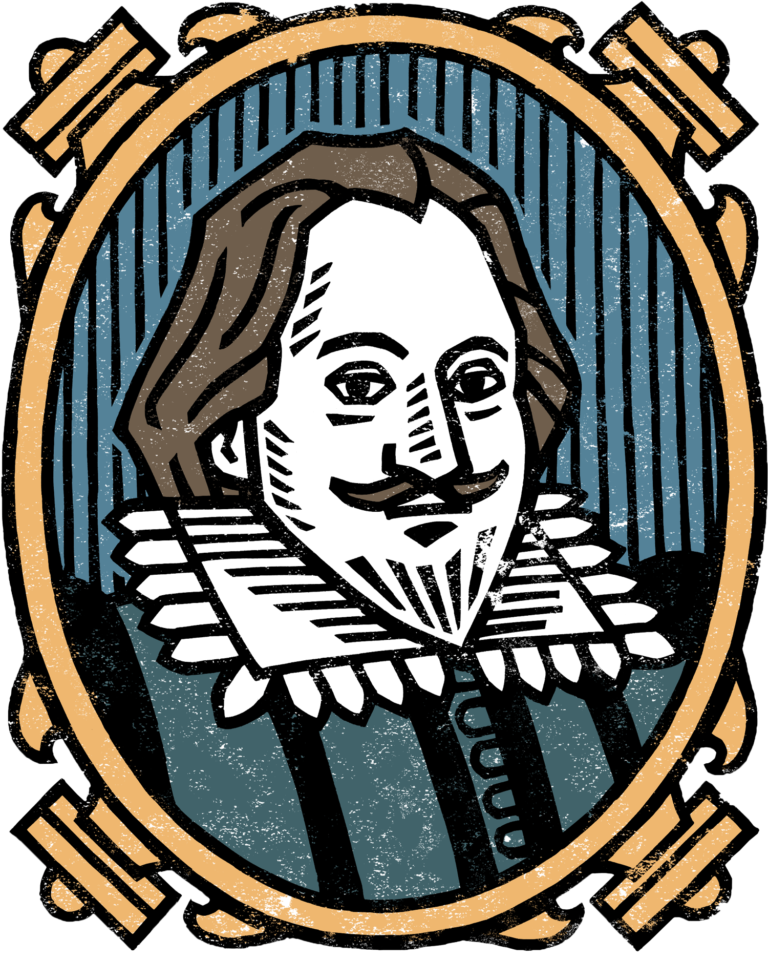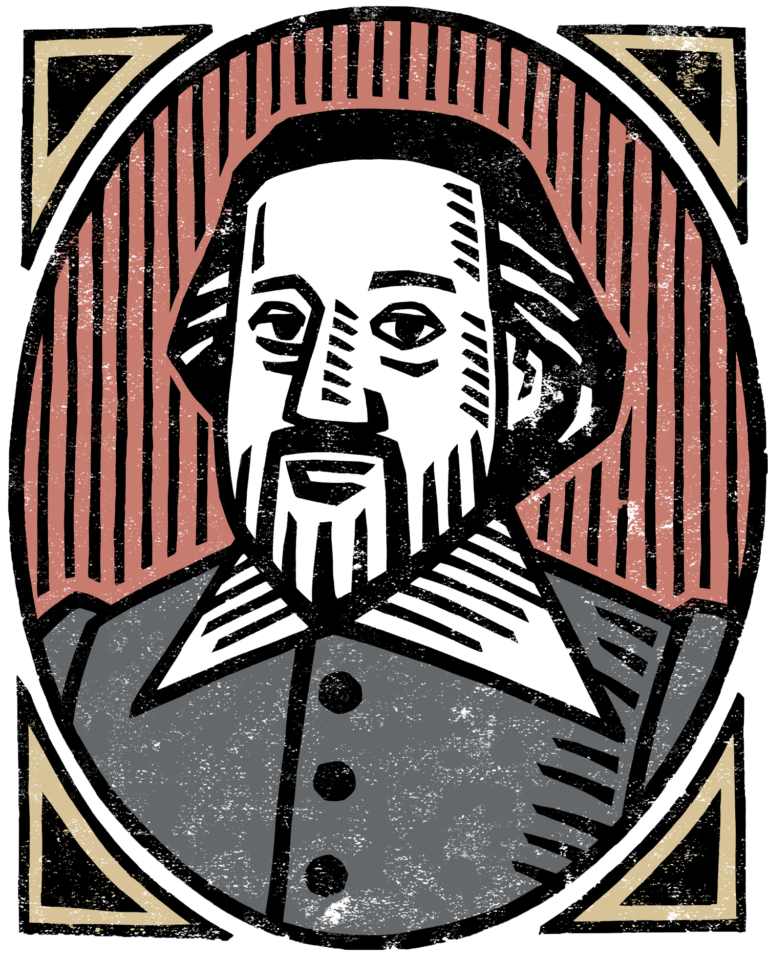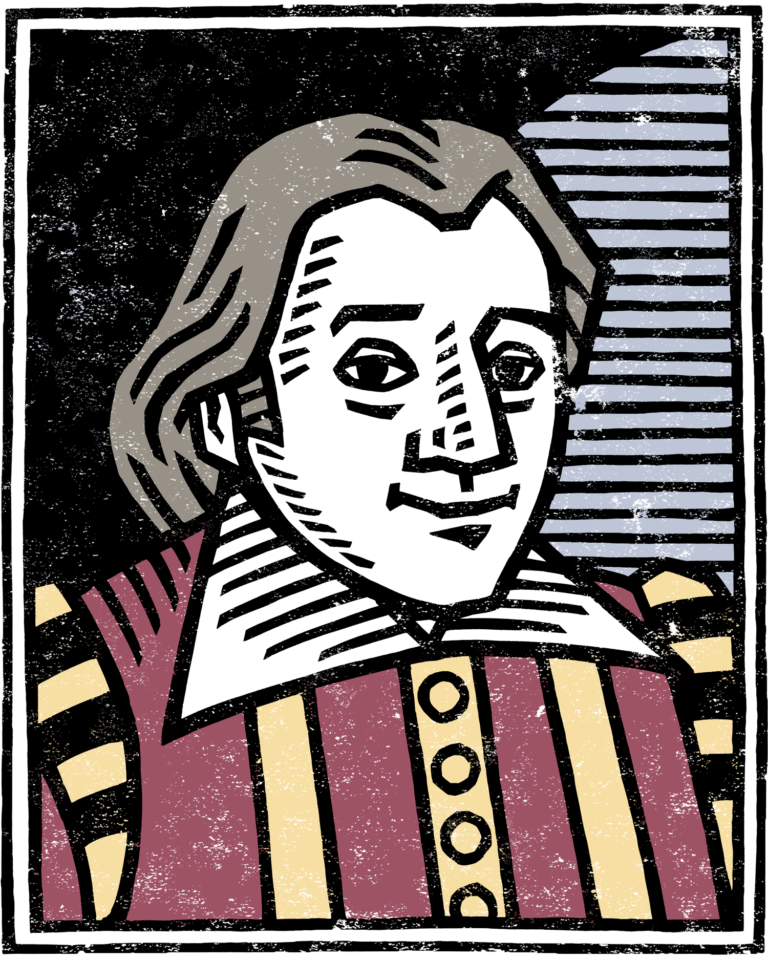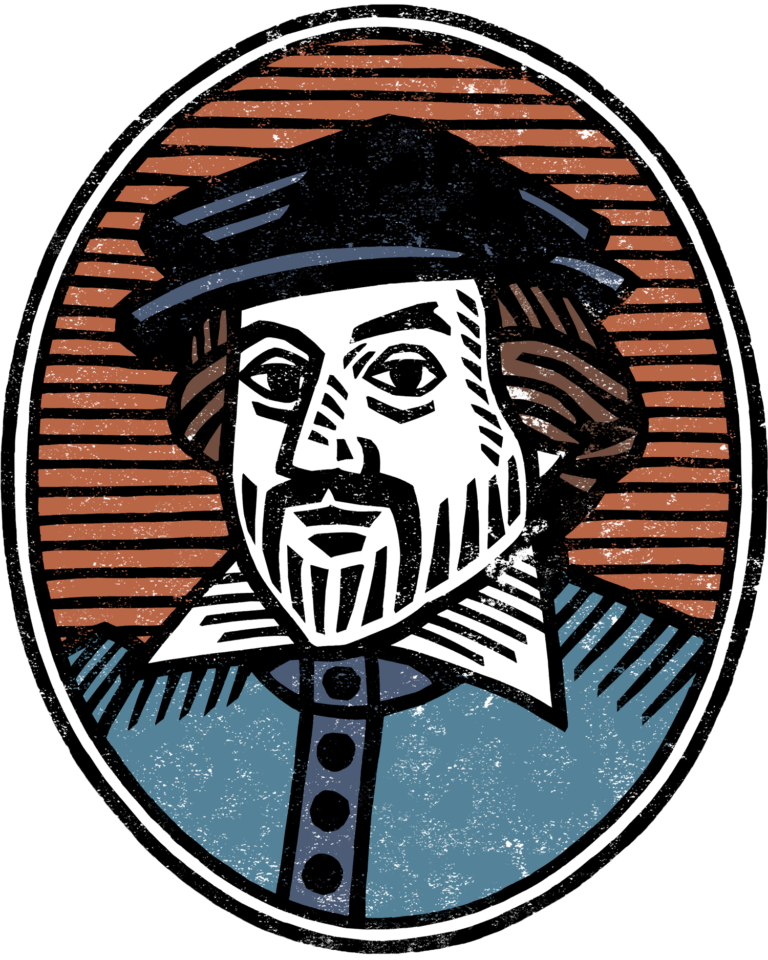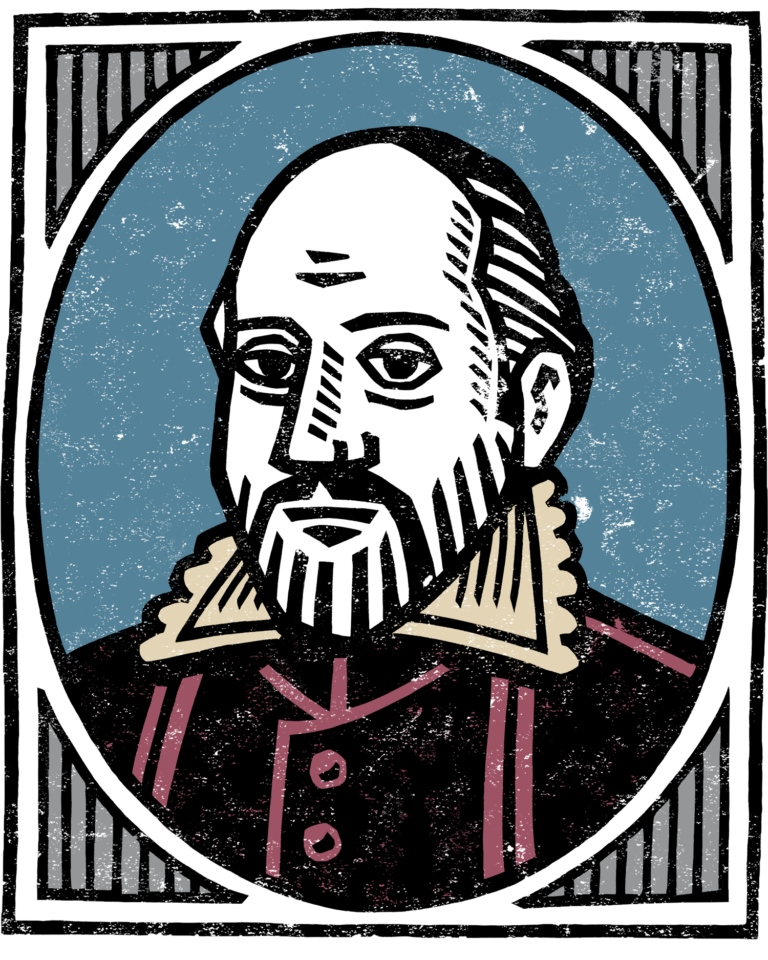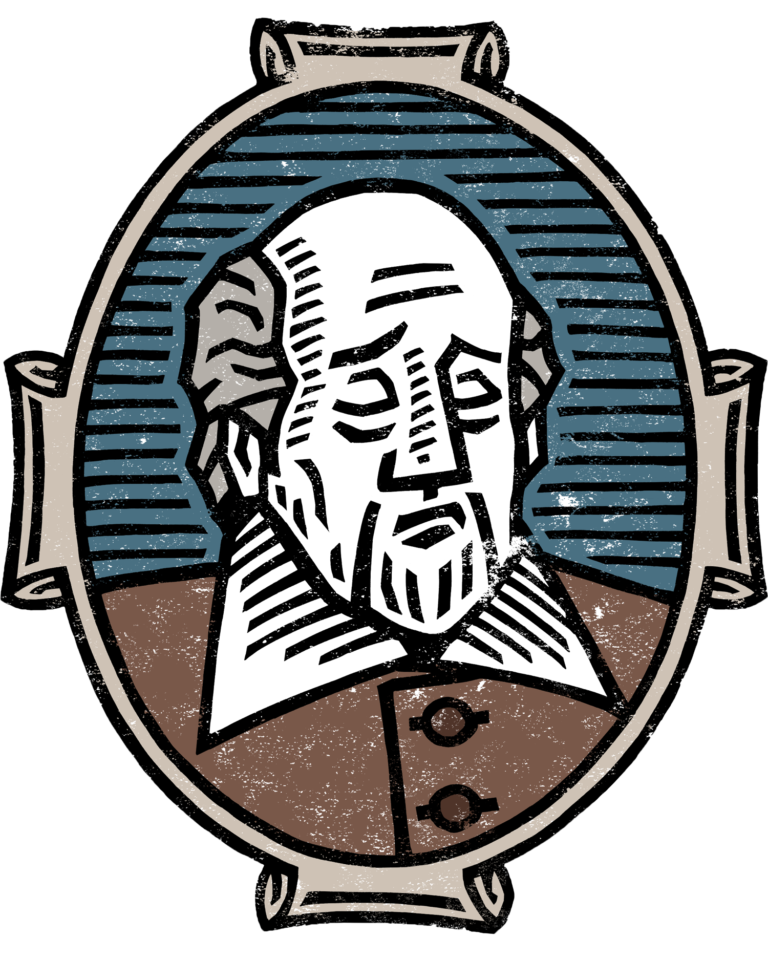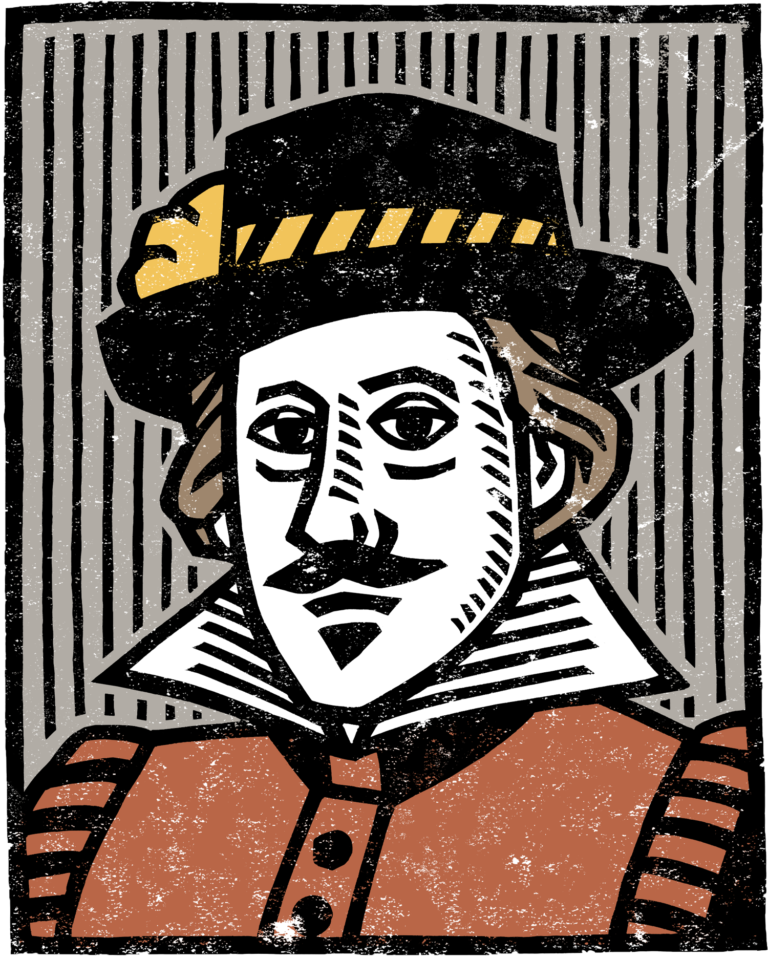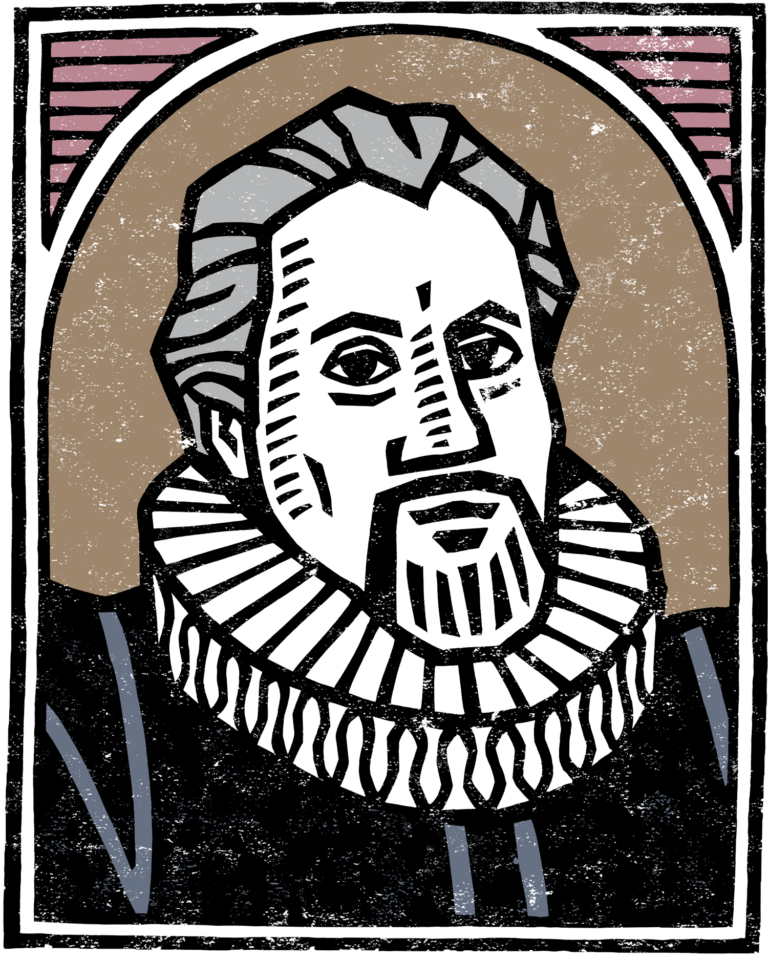The First Folio Cast
The First Folio’s title reads Mr. William Shakespeare’s Comedies, Histories, & Tragedies, but Shakespeare died in April 1616, more than seven years before the book was completed. Many other people had a role in getting his plays successfully printed – half of them for the first time – in this now-famous edition. Some of this cast of characters and their diverse roles are described here…
Ben Jonson
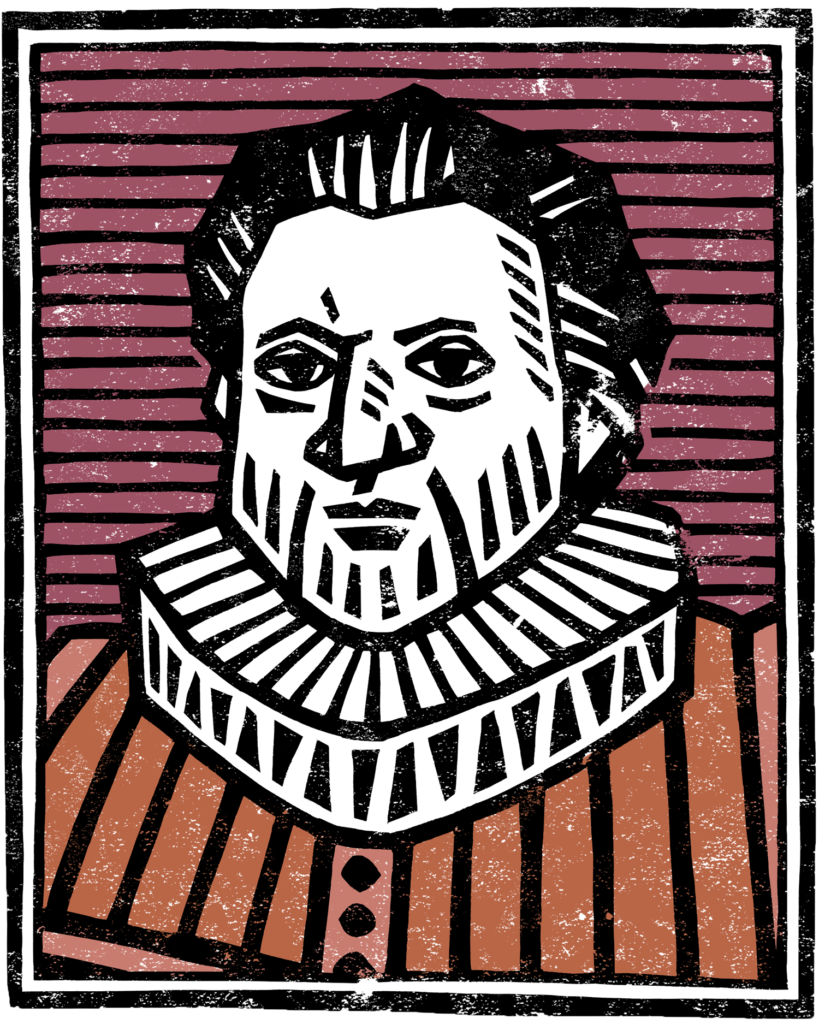
Ben Jonson (1572–1637) celebrated William Shakespeare’s work in two poems in the First Folio. His greatest contribution to the book was more subtle. His aggressive intellect was matched by a self-confidence that led him, in 1616, to publish a collected edition of his own plays and poems called Workes. Attracting both criticism and praise, Jonson’s book set a precedent for printing a collected edition of creative work that stood as a monument to its author. This paved the way for a similar collection to memorialise Shakespeare.
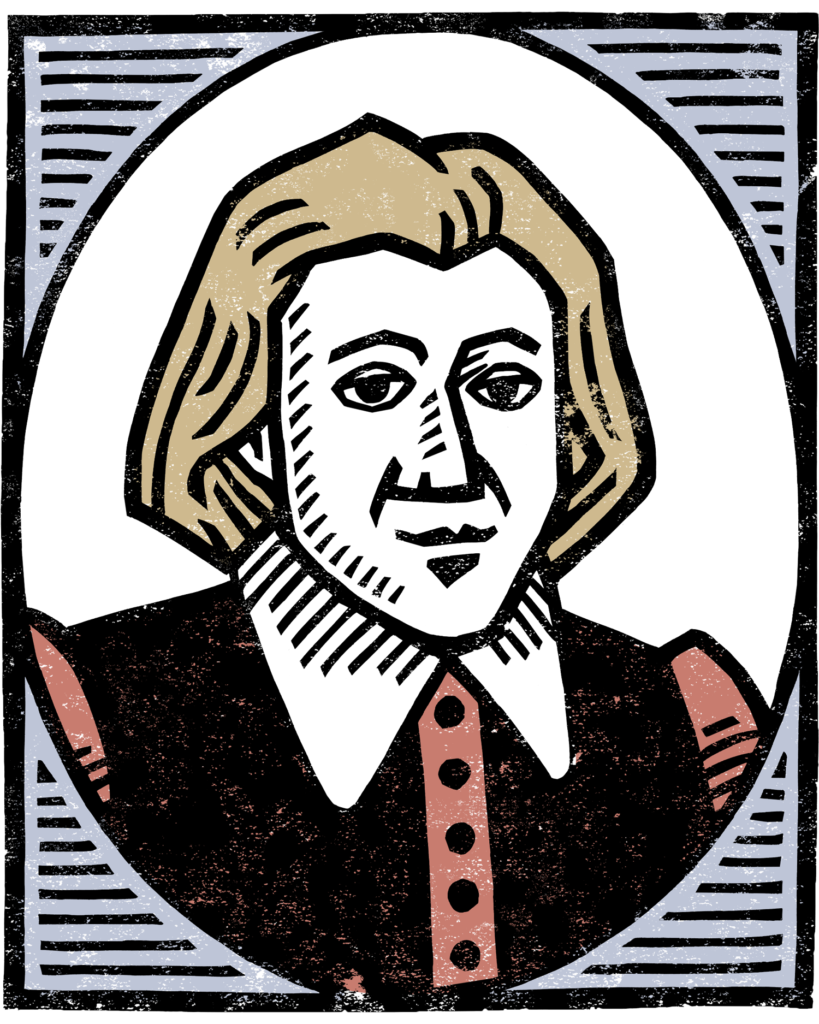
Martin Droeshout
Martin Droeshout (1601–c1650) was hired to engrave the portrait of William Shakespeare for the title-page of the First Folio. He was only 15 years old when Shakespeare died, so he probably worked from existing paintings or drawings. In this he was possibly guided by Heminge, Condell or Jonson, whose verse corroborates the likeness. Droeshout was an inexperienced young man at the start of his career, and the resulting engraving, amended twice during printing, is not a great portrait, either technically or artistically.
Isaac Jaggard

Isaac Jaggard (1595–1627) was one of the two principal publishers behind the First Folio. Along with Edward Blount, Isaac’s name appears at the bottom of its title-page. He ran the day-to-day operations of a print-shop owned by his father William Jaggard, who had the lucrative position of ‘Printer to the City of London’. Though his father had been involved in an aborted attempt to produce a serial edition of Shakespeare’s plays in 1619, perhaps illicitly, Isaac may have demonstrated more integrity and fidelity to Shakespeare’s work. The First Folio was printed at the Jaggards’ shop.
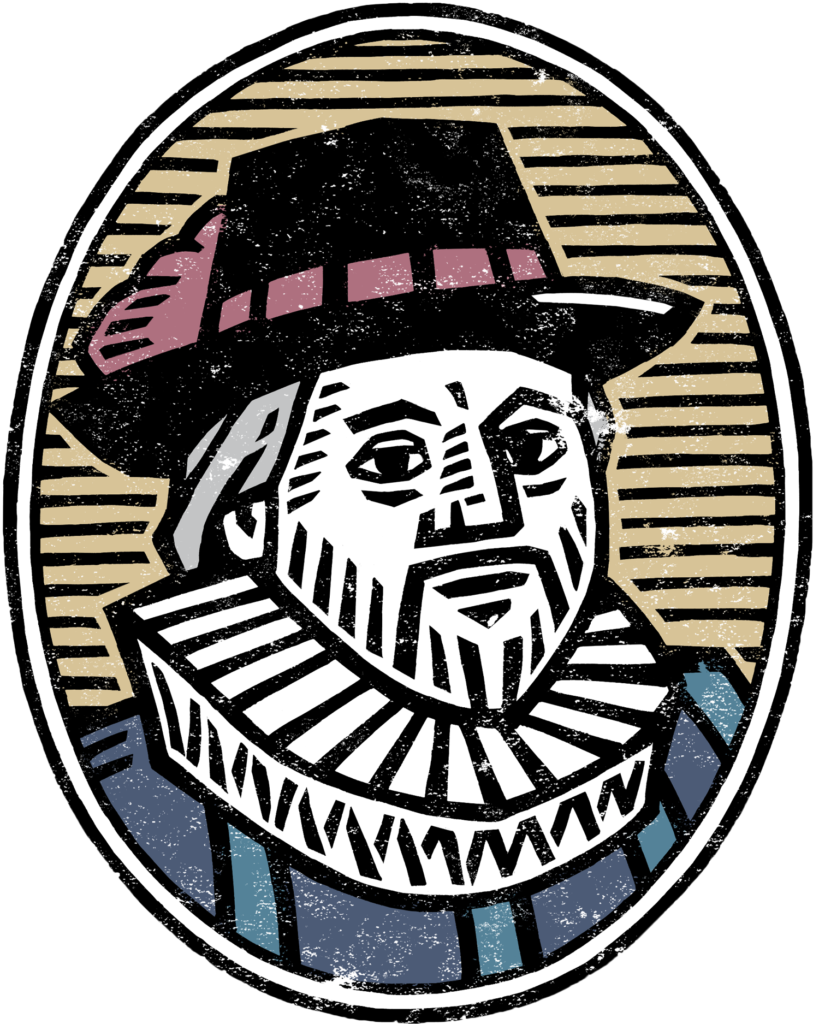
Edward Blount
Edward Blount (1562–1632) was one of the two principal publishers behind the First Folio: along with Isaac Jaggard, Blount’s name appears at the bottom of its title-page. He received a humanist education and served his apprenticeship with leading literary publisher William Ponsonby. He operated a shop in the stationer’s community in St Paul’s Churchyard and was a shrewd businessman, backing the publication of significant authors like Ben Jonson, Christopher Marlowe, and William Camden. Affluent, cosmopolitan, and well-connected, Blount probably provided the main financial investment for the First Folio, which he sold wholesale to his friends, other booksellers.
William, Earl of Pembroke
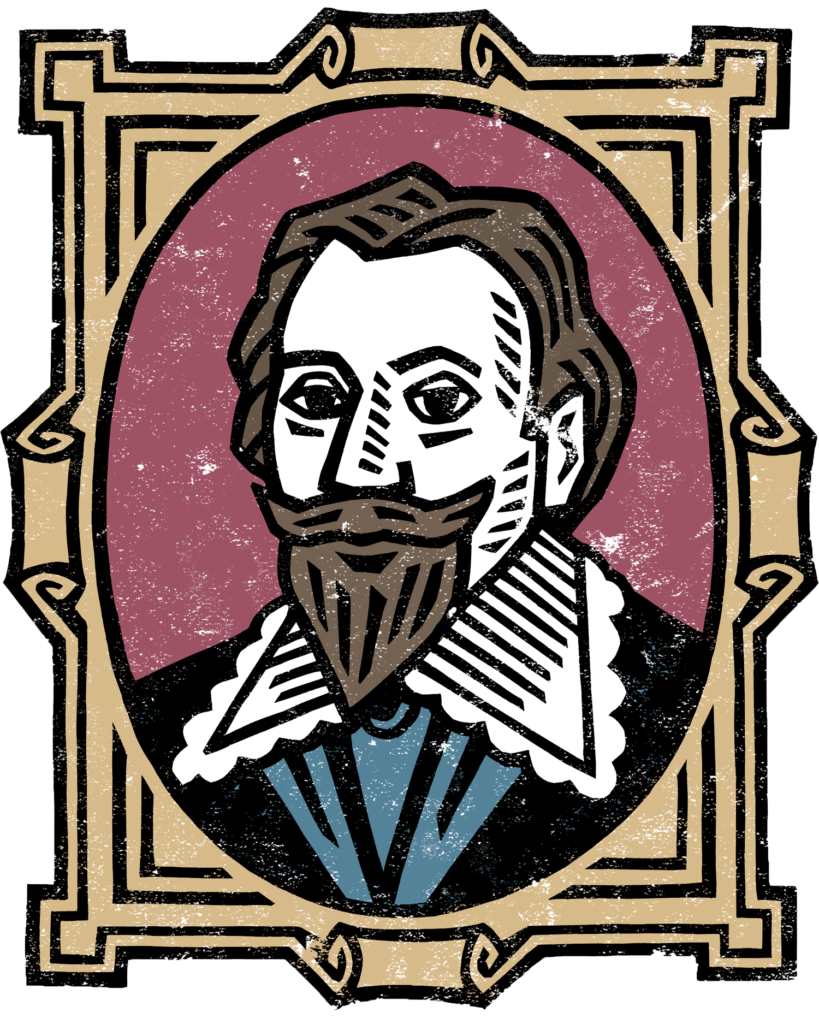
William Herbert, 3rd Earl of Pembroke (1580–1630) was a prominent figure in the court of King James and a patron of the arts. It is sometimes speculated that he was the ‘Mr W.H.’ to whom Thomas Thorpe dedicated his 1609 publication of Shakespeare’s sonnets (though disputed due to its informal style of address). As Lord Chamberlain from 1615, William Herbert was probably responsible for suppressing the so-called Pavier quartos of 1619. The First Folio includes a dedication by Heminge and Condell to William and his brother Philip: ‘the most noble and incomparable pair of brethren’.
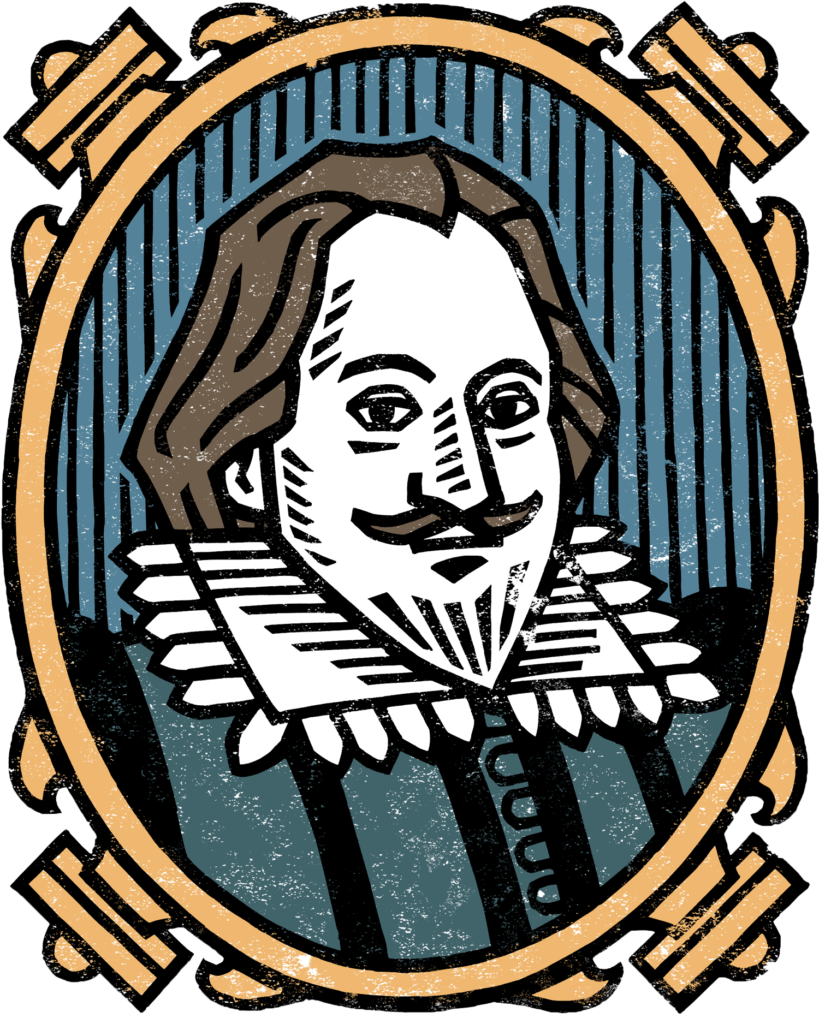
Philip, Earl of Montgomery
Philip Herbert, 1st Earl of Montgomery (1584–1650) was, like his elder brother William, a noted figure in the court of King James. His patronage of the arts was possibly not as strong as his passion for hunting and tournaments. He retained the King’s favour in spite of notoriously foul-mouthed outbursts and extensive debts due to gambling. The First Folio includes a dedication by Heminge and Condell to William and Phillip Herbert: ‘thankful… for the many favours we have received from your [Lordships]’.
John Heminge
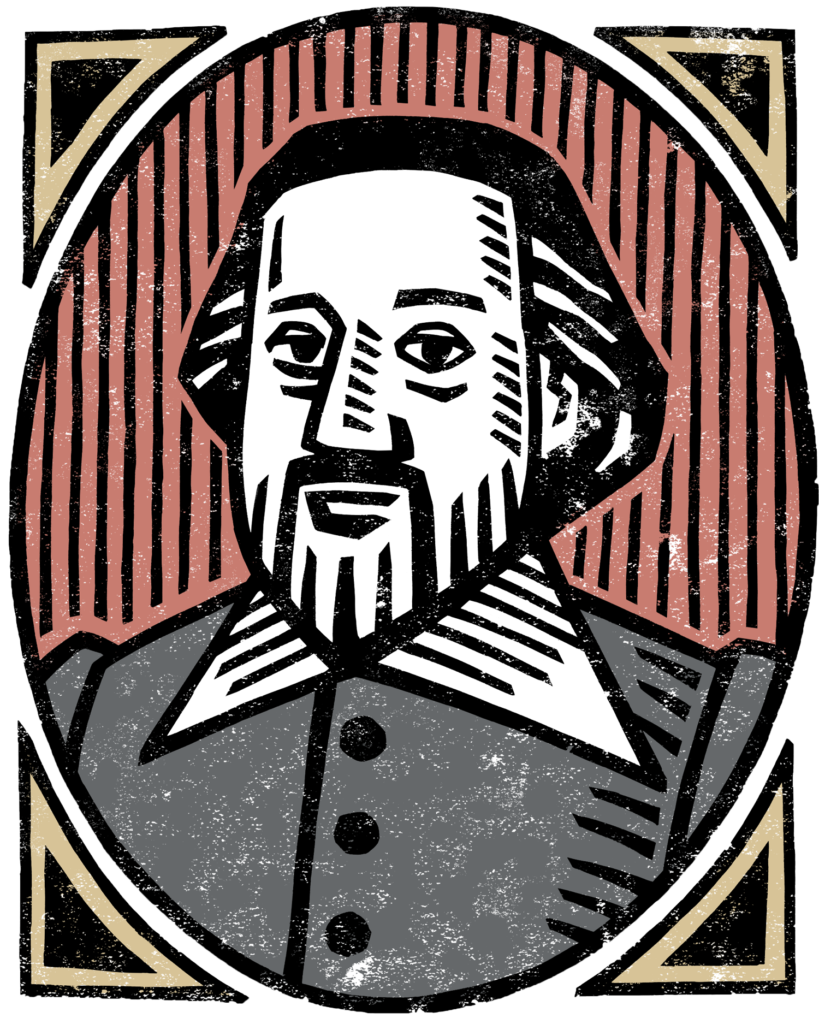
John Heminge (1566–1630) was one of the two principal editors of the First Folio. An actor and shareholder in the Lord Chamberlain’s Men (later the King’s Men), he began life as an apprentice in the Grocers’ Company. His business acumen proved beneficial when he later moved on to combine acting with the company’s administration and finances. With pragmatic leadership and artistic sensitivity, he was in a good position to ensure the First Folio was both commercially successful and a faithful record of Shakespeare’s achievement as a playwright.
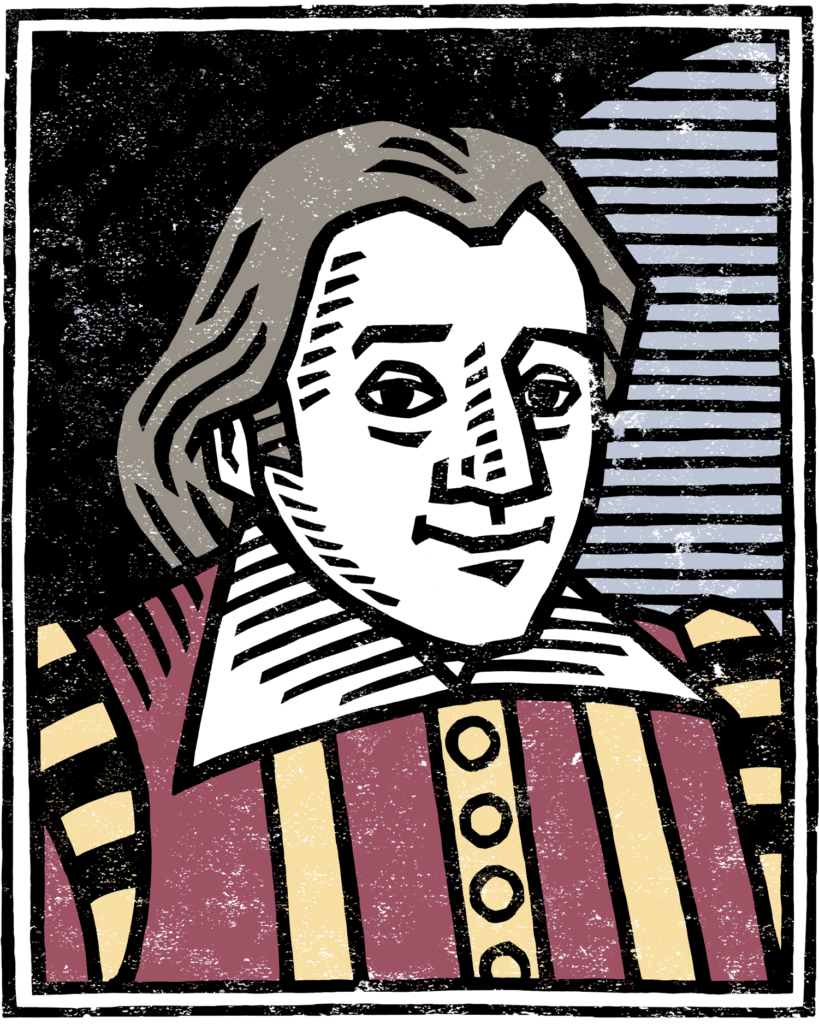
Henry Condell
Henry Condell (1576–1627) was one of the two principal editors of the First Folio. He was a talented actor and shareholder in the Lord Chamberlain’s Men (later the King’s Men) acting company. He probably appeared in all of Shakespeare’s plays, as the main player after Burbage. Like Heminge and Burbage, Condell was bequeathed money in Shakespeare’s will to buy a mourning ring, an indication of the strength of their relationship. His own profile in the company, and his friendship with the playwright may have driven his ambition to bring the First Folio to fruition.
Hugh Holland
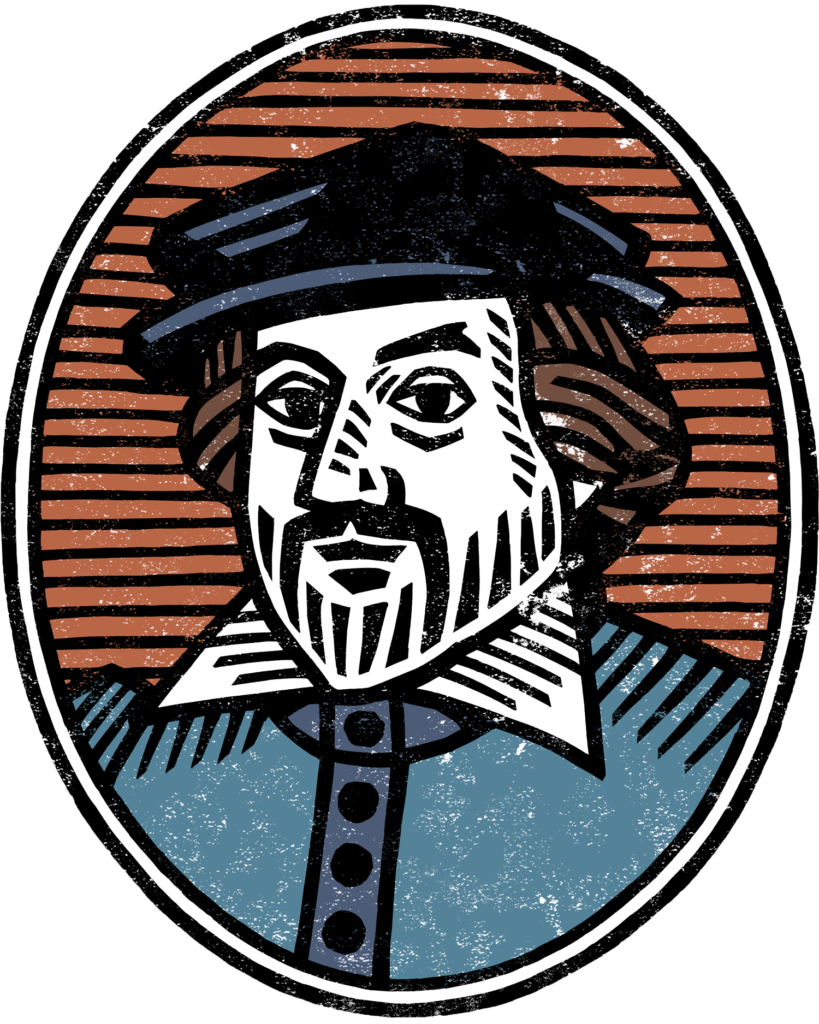
For the opening pages of the First Folio, Hugh Holland (1563–1633) wrote a eulogy in sonnet form, entitled ‘Upon the Lines and Life of the Famous Scenic Poet, Master William Shakespeare’. Born in north Wales, Holland was educated under the prominent intellectual William Camden at Westminster School. He was known for writing memorial verse, including elegies for Queen Elizabeth, the heir to the throne Prince Henry, and King James. He also wrote dedicatory poems for literary works, including the play Sejanus by his friend Ben Jonson. Like Jonson, he was buried in Westminster Abbey.
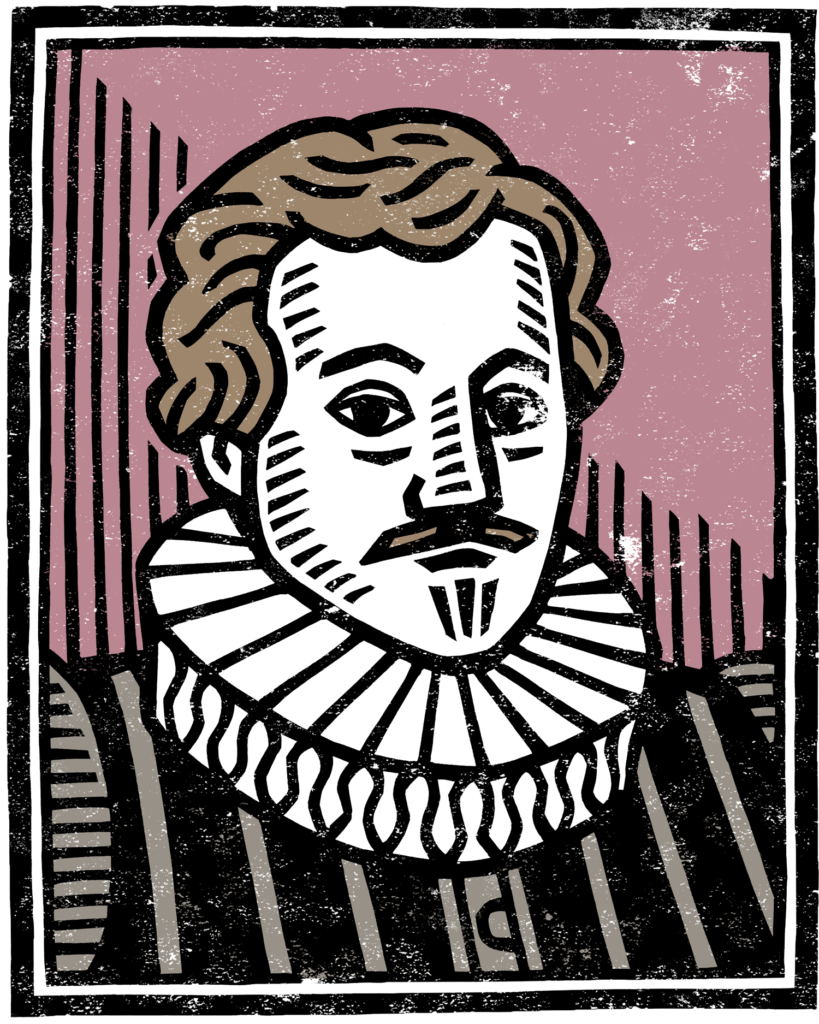
Leonard Digges
One of the eulogies in the opening pages of the First Folio is a 22-line poem by Leonard Digges (1588–1635). In Stratford-upon-Avon, Shakespeare had appointed Digges’ step-father, Thomas Russell, as an overseer of his will. In London, the Digges family were neighbours of the actor – and co-editor of the First Folio – John Heminge. In 1617, Edward Blount published Digges’ translation of the Roman poet Claudian’s Proserpine. These intellectual and personal connections made him a natural choice to contribute to the First Folio. His poem contains the earliest reference to Shakespeare’s monument in Holy Trinity Church, Stratford-upon-Avon.
James Mabbe

One of the eulogies in the opening pages is a simple eight-line verse credited to ‘I.M.’, generally accepted to be the poet and translator James Mabbe (1571/2–1642). Mabbe had previously worked with Edward Blount to publish a Spanish Romance, The Rogue, for which Ben Jonson wrote a dedicatory poem. The intellectual Mabbe was a fellow of Magdalen College, Oxford. In 1613 he sent to a friend at university a copy of poems by Lope de Vega, with a handwritten inscription by another friend, Leonard Digges, comparing the Spaniard’s work favourably to the sonnets of Shakespeare.

William Jaggard
William Jaggard (1558–1623) was an experienced and sometimes unscrupulous printer, who secured the lucrative position of ‘Printer to the City of London’ in 1610. In 1619, he and fellow publisher Thomas Pavier, attempted a serial collected edition of Shakespeare plays by reprinting a number of quartos. This attempt was apparently stopped by the Lord Chamberlain, William Herbert. Nevertheless Jaggard’s print-shop, at the sign of the Half-Eagle and Key, was chosen to print the First Folio under the supervision of his eldest son Isaac. William Jaggard died a few weeks before the Folio’s publication, and he is credited on its final page.
John Smithweeke
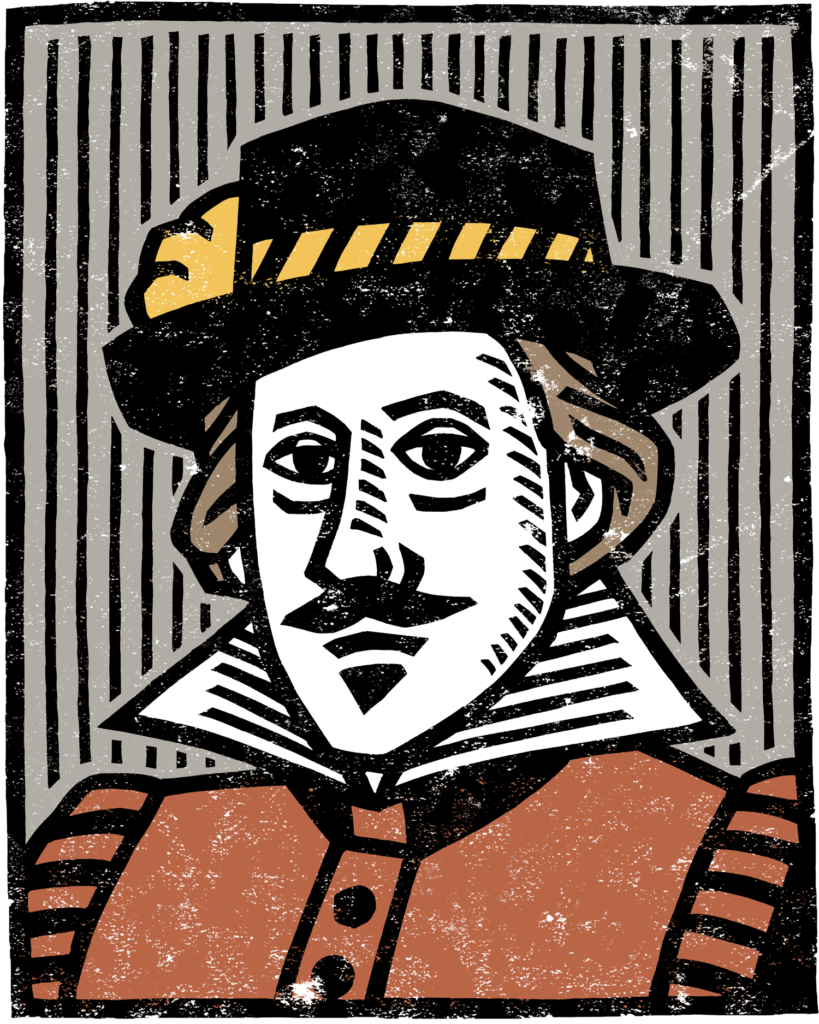
John Smithweeke (?–1641), often spelled Smethwick, was a co-publisher of the First Folio, and he is credited on its final page. In 1607, he had acquired the rights for Romeo and Juliet, Hamlet, Love’s Labour’s Lost and a version of The Taming of the Shrew. Instead of selling his rights to these plays for a fixed fee, he allowed them to be included in the First Folio in return for a share of profits. Like William Aspley, he later chose to be a co-publisher of the Second Folio, indicating that the First Folio had successfully achieved a profit.
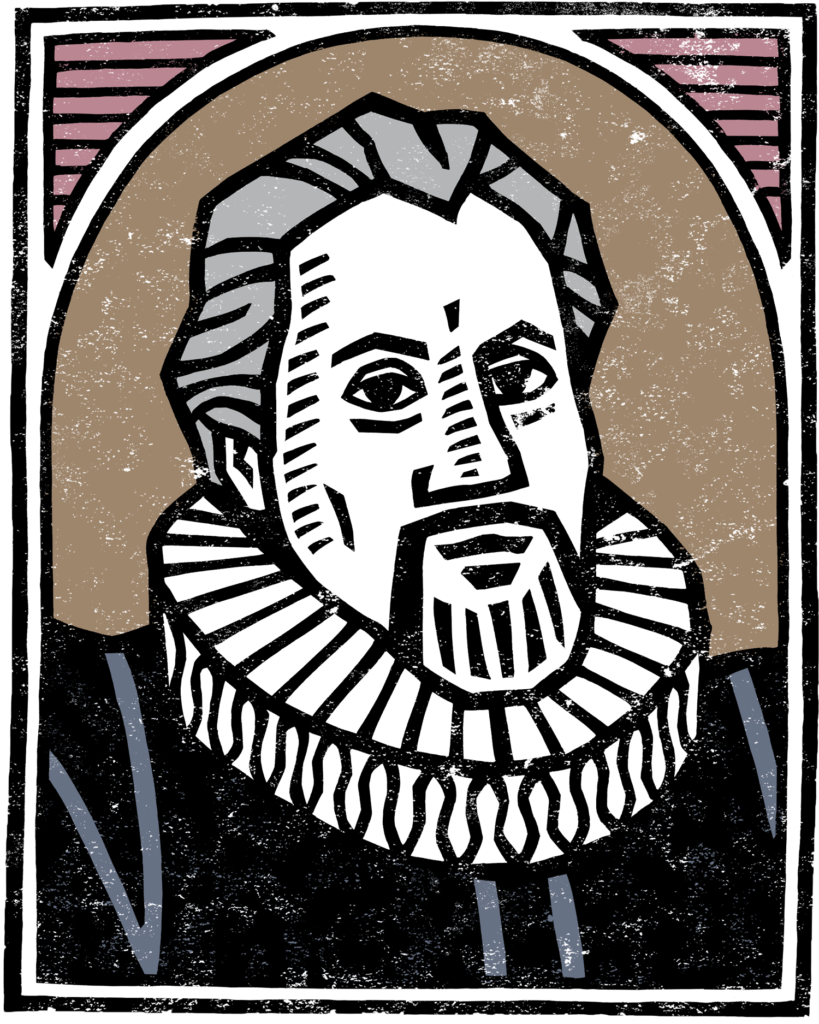
William Aspley
William Aspley (1573–1640) was a co-publisher of the First Folio, and is credited on its final page. Known for his publication of religious works, his shop, at the sign of the Parrot, was near to Edward Blount’s in St Paul’s Churchyard. In 1600, Aspley had registered the rights and had quartos printed of both Much Ado About Nothing and Henry IV, Part 2. Instead of selling his rights to these for a fixed fee, he allowed them to be included in the First Folio in return for a share of profits, and the right to sell them from his own shop.



